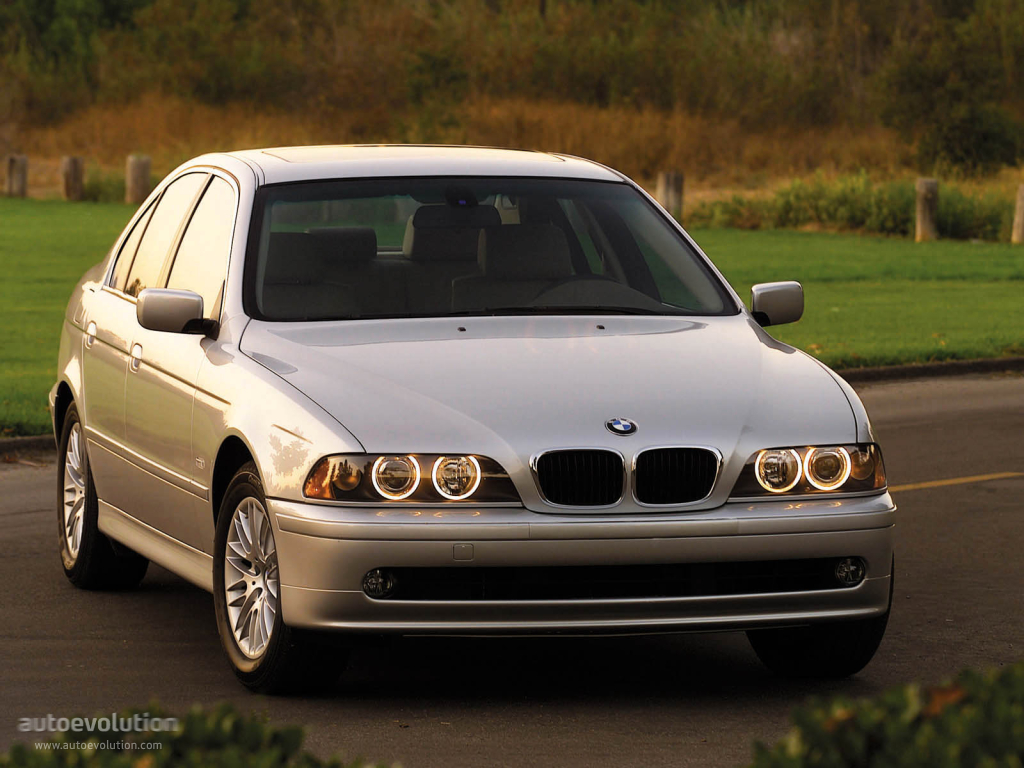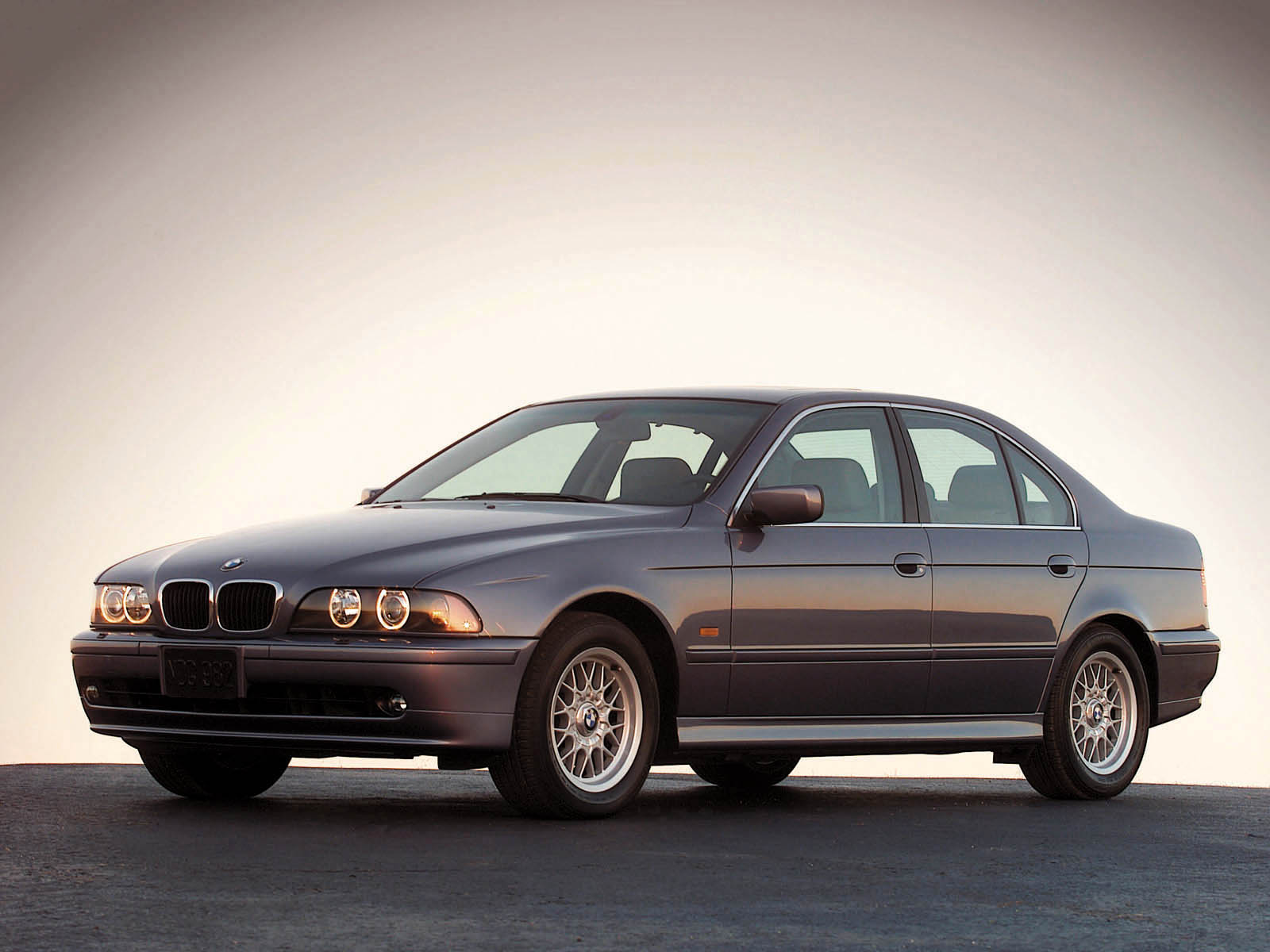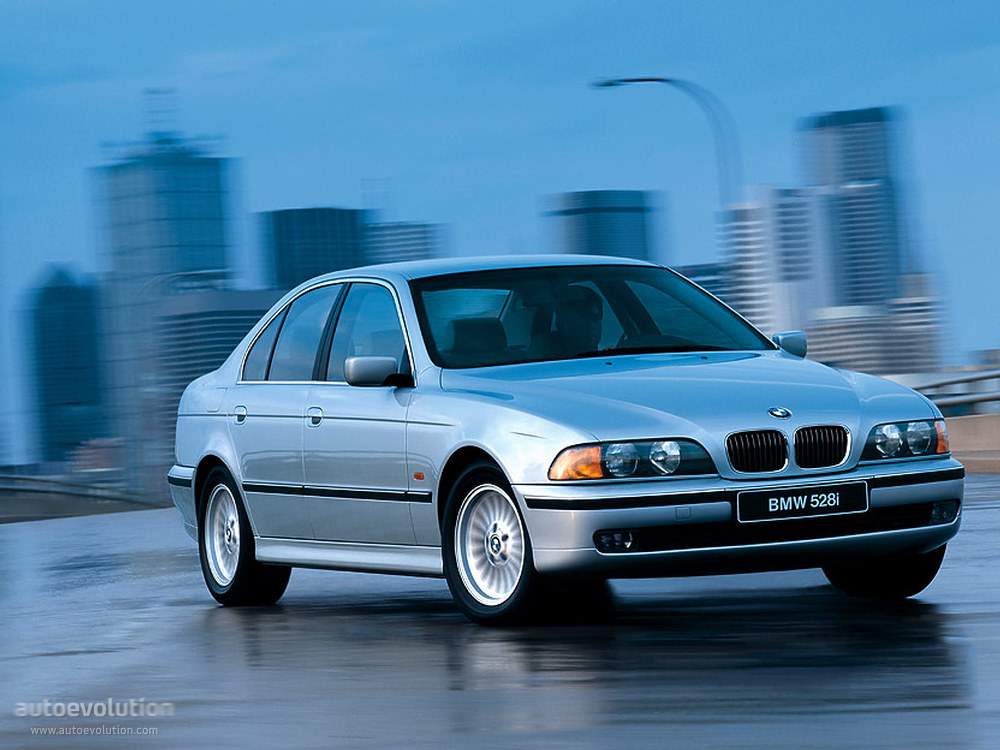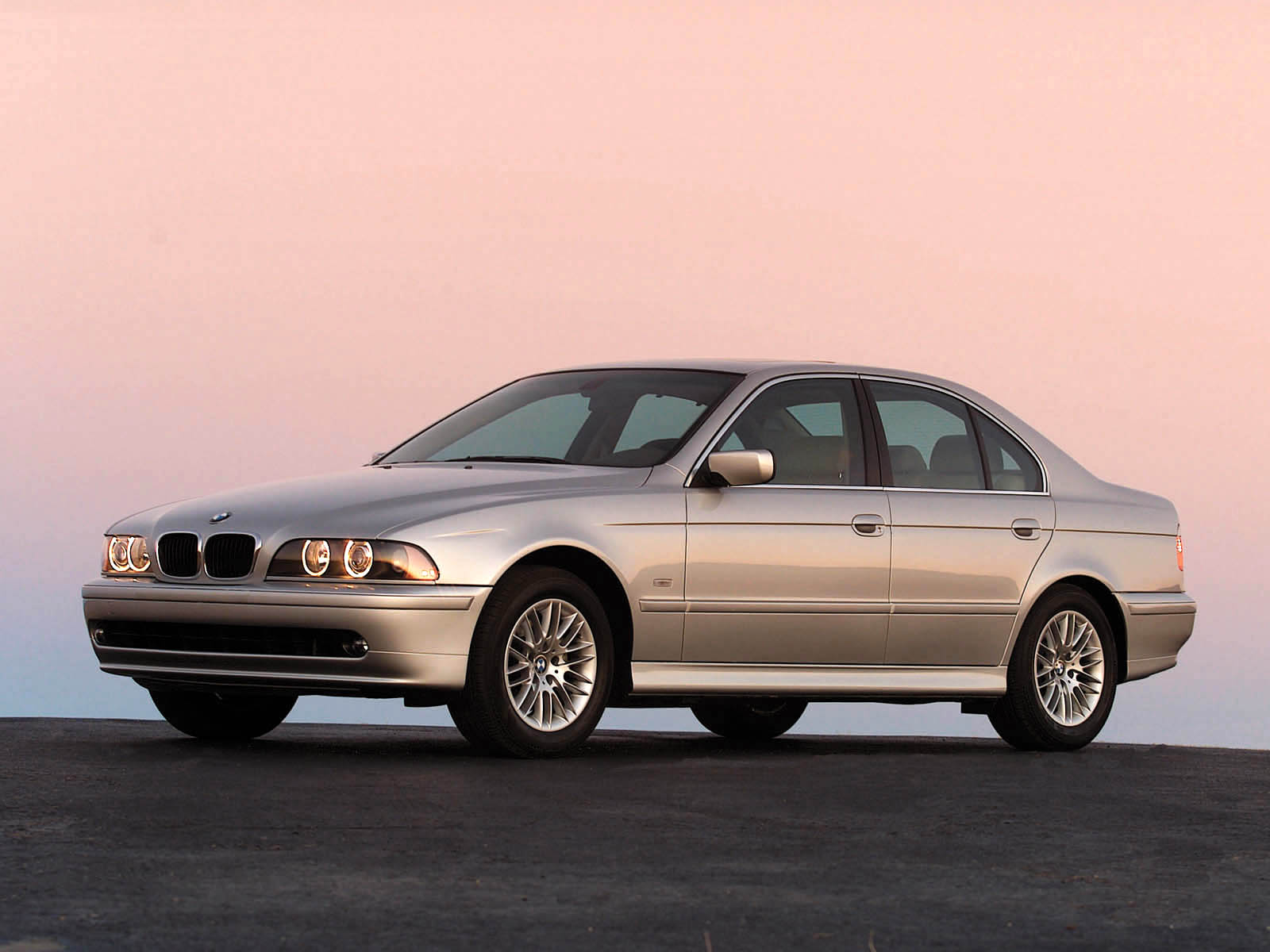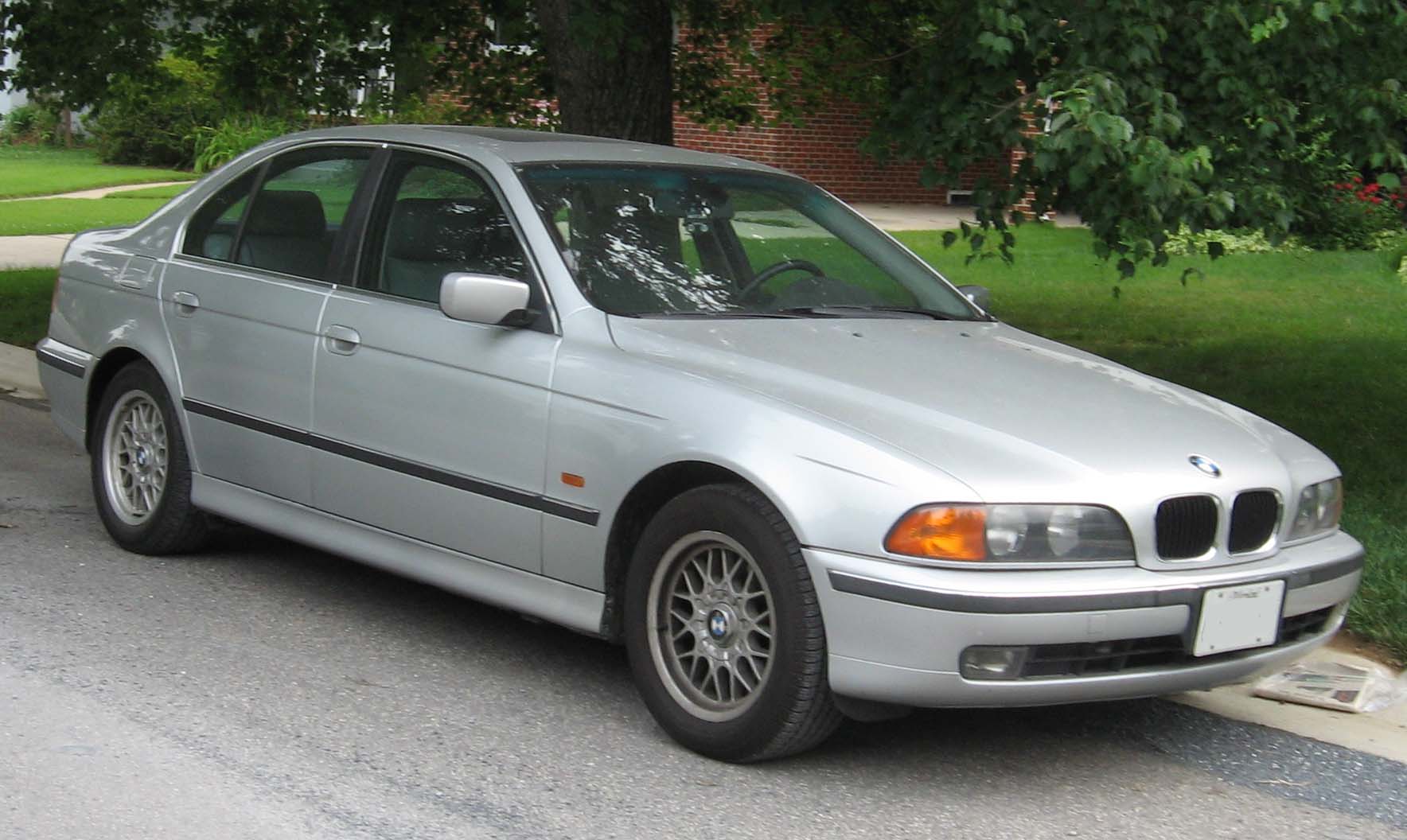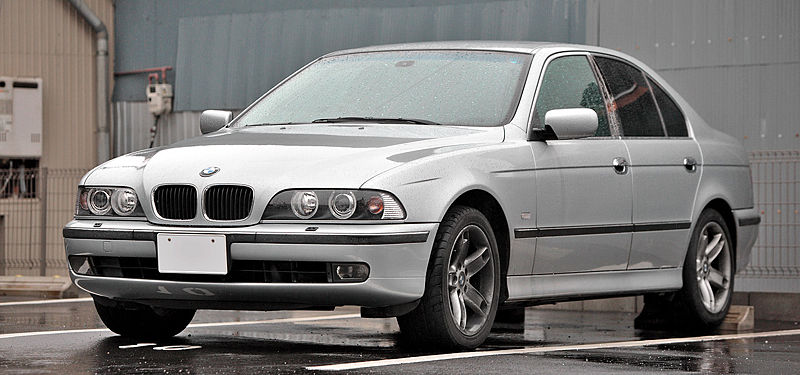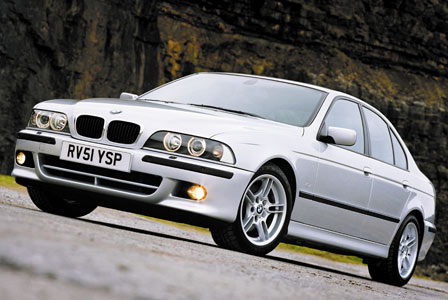BMW 5 Series (E39)
BMW 5 Series Sedan (1995-2000)
The E39 series refers to the fourth generation of the BMW 5 - series BMW in the upper middle class.
She joined in September 1995, the successor to the E34 series. Initially, only the sedan was replaced, during the production of the Touring ( E34 / 2) expired in June 1996. The performance ranged from 85 kW up to 294 kW in the 525td introduced in the summer of 1998 M5.
In June 2003, the sedan model E60/E61, which was a redesign in many parts appeared. The Touring followed in the spring of 2004.
- 2.1 consumption
Model history
General
At launch it was the 5 series only as four-door sedan with a notchback. Only in March 1997, the estate version was introduced under the name Touring, which again received the traditional L-shaped taillights. The Touring decreed as its predecessor E34 via a separately opening rear window to enhance the load options.
In contrast to his predecessor for the E39 no all-wheel drive was provided. Only the successor E60 was again available with four drive wheels under the name xDrive.
Regarding the handling characteristics were forged new ground by which ( according to BMW ) world's first production car was brought to a so-called lightweight chassis, the chassis components were mostly of aluminum on the market. Also a first in this class was the exhaust system made entirely of stainless steel.
For a small number of customers, the variant was 540i Protection with special safety equipment such as bulletproof glass or reinforced body in the program. The additional security over the conventional 540i sedan brought an additional weight of 170 kg.
BMW 5 Series Touring (1997-2000)
Equipment
The first time a double glazed side window was offered for this generation of the BMW 5 - series, which was to serve primarily the interior noise insulation and temperature insulation. The new 5 - generation also received many hitherto unknown extras and options. Thus, for example, was for the first time a multi-function steering wheel available, the cruise control system, recirculation of ventilation, the radio or the car phone could operate via its integrated buttons located. As an option, the steering wheel could be ordered with a heating, which was also to operate a steering wheel button.
Interior (2000-2003)
Interior of the U.S. version ( the most striking feature here is the thicker at the bottom of the dashboard)
Facelift
In September 2000 the model range was given a facelift and new optical engines. The front headlights were replaced with headlights with Celis - parking light rings and round indicator lights, the rear lights also converted to Celis technology. The Celis technology was an idea formed by Hella, a major automotive supplier based in Lippstadt. The M52TU engines were replaced by the M54, which offered slightly higher displacements and services. All bumpers received a paint in body color ( except M- package and M5), and the BMW kidney use ( grille ) has been changed. The design of the front bumper was changed and designed around the fog lights instead of rectangular. In addition, the navigation system received a 16:9 screen, which replaced the old 4:3 screen.
The following engines were replaced:
- 520i (2 L with 110 kW/150 hp) with 520i ( 2.2 liter with 125 kW/170 hp)
- 523i (125 kW/170 PS) by 525i (141 kW/192 hp)
- 528i ( 2.8 liter with 142 kW/193 hp) with 530i ( 3 liter with 170 kW/231 hp)
- 525td ( 2.5 liter with 85 kW/115 hp) through 520d (2 L with 100 kW/136 hp)
- 525tds (105 kW/143 hp) through 525d (120 kW/163 hp)
- 530d (135 kW/184 hp) through 530d (142 kW/193 hp)
Rear view
BMW 5 Series Touring (2000-2004)
New parking light rings: BMW 5 Series with M-Sport Package
From September 1999 you could order a surcharge, the new driving stability program DSC III. In the models BMW 535i and BMW 540i, it was standard.
The sedan version of the E39 was produced until June 2003, while the Touring still rolled off the line until April 2004.
Motors
For the introduction of the E39 in the fall of 1995, there were three petrol and one diesel. Here, it was known from the 3 - line six-cylinder petrol 520i, 523i, 528i (M52 ) as well as the 2.5 -liter diesel in the swirl chamber 525tds. A year later led the BMW 535i and 540i V8 models (the latter was fitted as standard with 6-speed manual transmission) and 1998 the first common rail diesel in the BMW 5 - series a, the 530d. In addition, the M5 came up to this time most powerful series - 5er in the program. In summer 1998, the new 3 Series was introduced, which started with technically revised gasoline engines ( TÜ ) completely. At the same time the E39 so learned a new feature of its engine range. These included:
- 520i M52TU B20 ( 08/1998-08/2000 )
- 523i M52TU B25 ( 08/1998-08/2000 )
- 528i M52TU B28 ( 08/1998-08/2000 )
- 535i M62 B35 ( 08/1998-04/2004 )
- 540i M62TU B44 ( 08/1998-04/2004 )
The aim of the revision was an increase in torque (especially at low speeds ), the motor power ( eight-cylinder engines ) and efficiency - so overall improved performance levels with unchanged or lowered fuel consumption. This was (before only on the inlet side ) is achieved in some engines in the first place through the use of the variable camshaft drive ( " Double Vanos " ) on the outlet side.
In order to detect how many cylinders the engine has, is usually sufficient to look at the so-called BMW kidney. BMW 5 Series set for all V8 models ( 535i, 540i and M5) to subtly chromed vertical struts, while all four-and six-cylinder ran with black struts from the tape.
- TÜ = technically revised
- Values in square brackets for models with automatic transmission
Since the E39 was popular with fleet customers, there were some there demand for these engines also throttled: 520i (1991 cc ) with 100 kW/136 hp, 520i ( 2171 cc ) with 120 kW/163 hp, 520d with 92 kW/125 PS; 523i with 120 kW/163 hp, 77 kW/105 hp and with 525td 530d with 120 kW/163 hp.
Consumption
Consumption data of the Touring models ( with manual transmission ) 1998 in l/100 km. CO2 emissions in g / km ( source: 5pcs Product Brochure BMW Touring, 1998)
Consumption data of the Touring models ( with manual transmission ) from 2000 in l/100 km (source: 5pcs Product Brochure BMW touring, 2000)
Consumption data of the sedan ( with manual and automatic transmissions *) from 2001 in l/100 km (source: 5pcs Product Brochure BMW, 2002)
* = Values in brackets apply to automatic.
BMW M5
See main article BMW M5
Use in film
Models of this 5-series can be seen in the following movies:
- Frasier (1996-2004) with Kelsey Grammer - Black 540i with gray leather seats
- The Sopranos (1999-2007) with James Gandolfini - dark green 5 Series Touring ( Vorfacelift ) with sand-colored leather seats
- Gone In 60 Seconds (2000) with Nicolas Cage - 540i
- The Crimson Rivers (2000) with Jean Reno - 540i
- Scary Movie (2000) with Anna Faris - 540i
- The Hire Chosen (2001) - 540i
- The Hire Star (2001) - M5
- Mr. & Mrs. Smith (2005) - optically modified straight-six
- Borat (2006) - optically modified 520i in Alpine White III
- Evan Almighty (2007) - 525i
- Motel (film ) (2007 ) - 528i
- Fast & Furious - New Model. Original parts. (2009) - optically modified 540i
- Tatort ( TV series) - Bremer scene with black 525i (Facelift )

